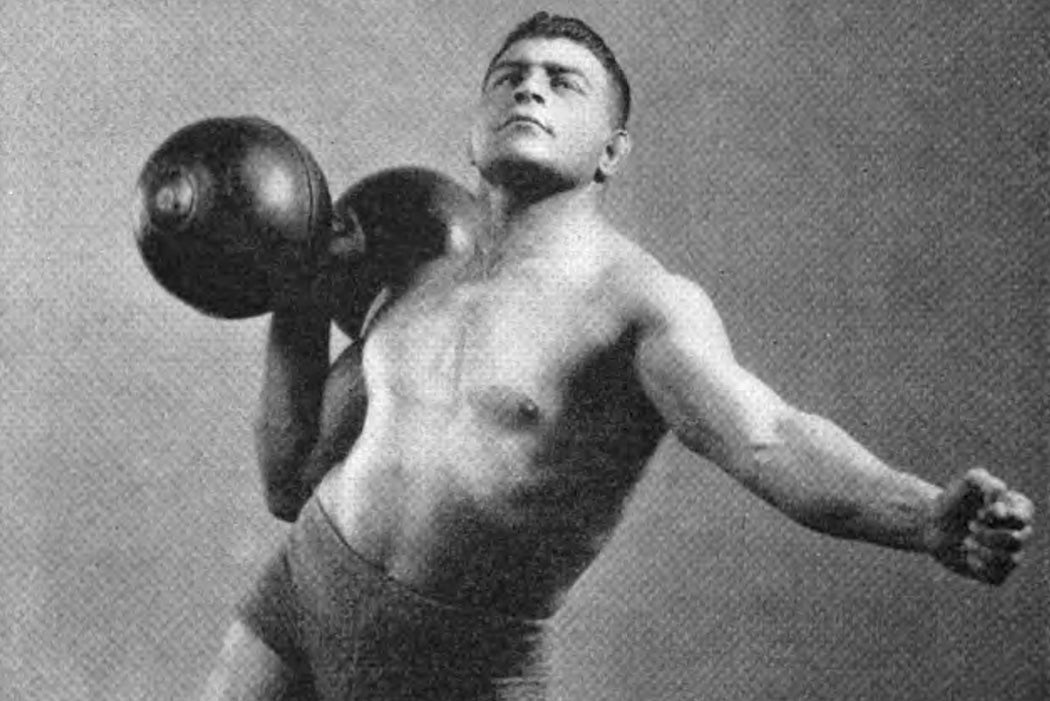Earle Edwin Liederman had secrets. But unlike a lot of people with something to hide, he was willing to tell all. His clues to physical fitness, spilled in a correspondence course, not only put him at the forefront of the mail-order business of the 1920s, they also made him a pioneer of fitness marketing, as sports historians Benjamin Pollack and Janice Todd reveal. Liederman was the first to use “the virile image of enhanced American masculinity to sell a weekly course delivered by mail on a multimillion-dollar scale.”
Liederman was born in Brooklyn, New York, in 1888. He grew up in poverty, which affected his health. As a friend wrote, “his was a sickly, skinny childhood.” And, Pollack and Todd explain, men like him often used beginnings like these as selling points, with sales pitches that “capitalized on stories of…earlier weakness and debility as proof of the transformative power of their [fitness] systems.”
Liederman’s interest in physical fitness was sparked at a young age, and he later attended college to become a physical education teacher. After a short stint with the New York Board of Education, he began touring on vaudeville stages as a strongman. He never reached stardom, but he still wanted to be like the strongmen he had admired in his youth. Fitness culture was taking hold, and luckily for Liederman, it was happening just as mail-order courses were becoming big business. As Pollack and Todd write, “Between 1900 and 1930, over four million Americans, mostly from the working class, turned to these courses.” People could study everything from chemistry to law from the comfort of their homes, and “mail-order muscles” also found their way into course catalogs.
These courses “consisted solely of exercise regimens, mailed weekly, usually with photographs demonstrating the prescribed exercises,” and Liederman wanted in. He began selling his first course in 1917, with a small ad in Physical Culture magazine. The ad featured “Liederman’s head and torso, displaying his handsome face and impressive arm, deltoid, and neck development,” and for thirty-seven dollars, any man could look like Liederman, in just ninety days.
As the business grew, so did the claims. “Your whole future may depend on this one step,” one ad warned. Those new, muscled days ahead would give men more success in business and love.
Weekly Newsletter
Liederman’s strategies pulled from a playbook that’s still in use today. As media scholar Emily Contois points out, “the diet industry convincingly feeds consumers not only weight loss programs and products, but also promises.” And those promises are often tied to gender: “The work of male weight loss is external to the self—oriented around public life, professional advancement, and athletic achievement.”
By the late 1920s, Liederman’s was the most well-known mail-order fitness course in the country, and in 1929 his publishing company earned over $1 million. But it didn’t last. Liederman’s ads also caught the attention of the Federal Trade Commission, which charged that they were “palpably false.” Liederman claimed that he hadn’t knowingly misled anyone, but the FTC was unmoved and issued a cease-and-desist order, “forcing him to abandon $100,000 in advertisements already purchased on credit.” That, along with the nationwide economic downturn, signaled the end of the mail-order king’s reign.







